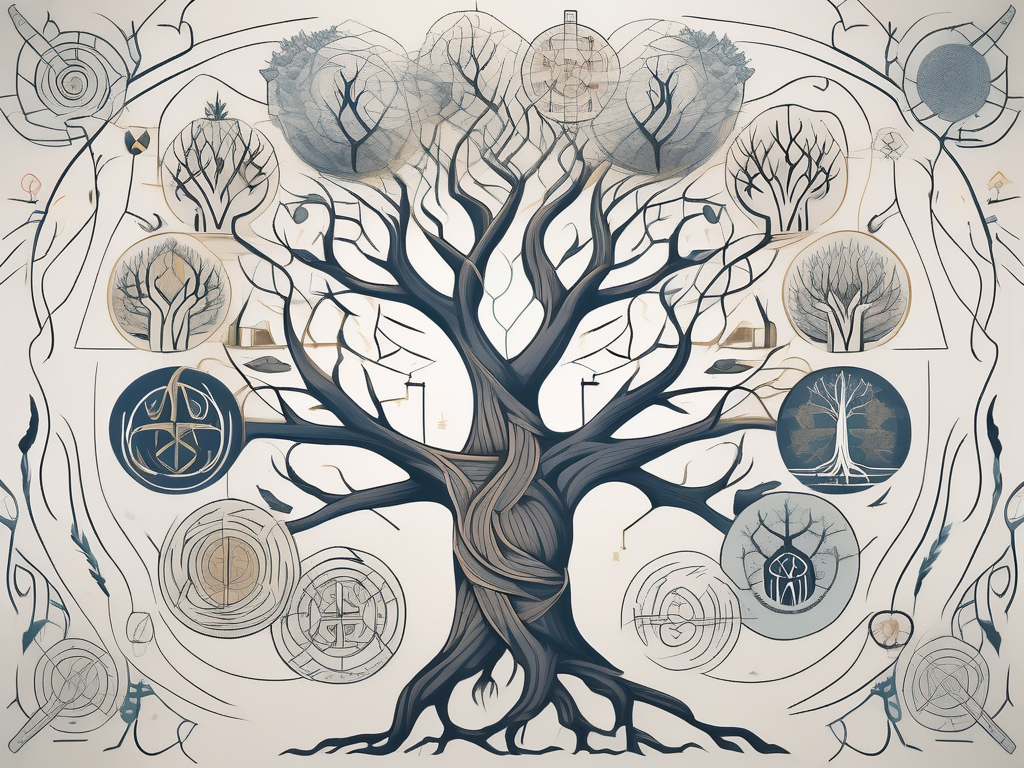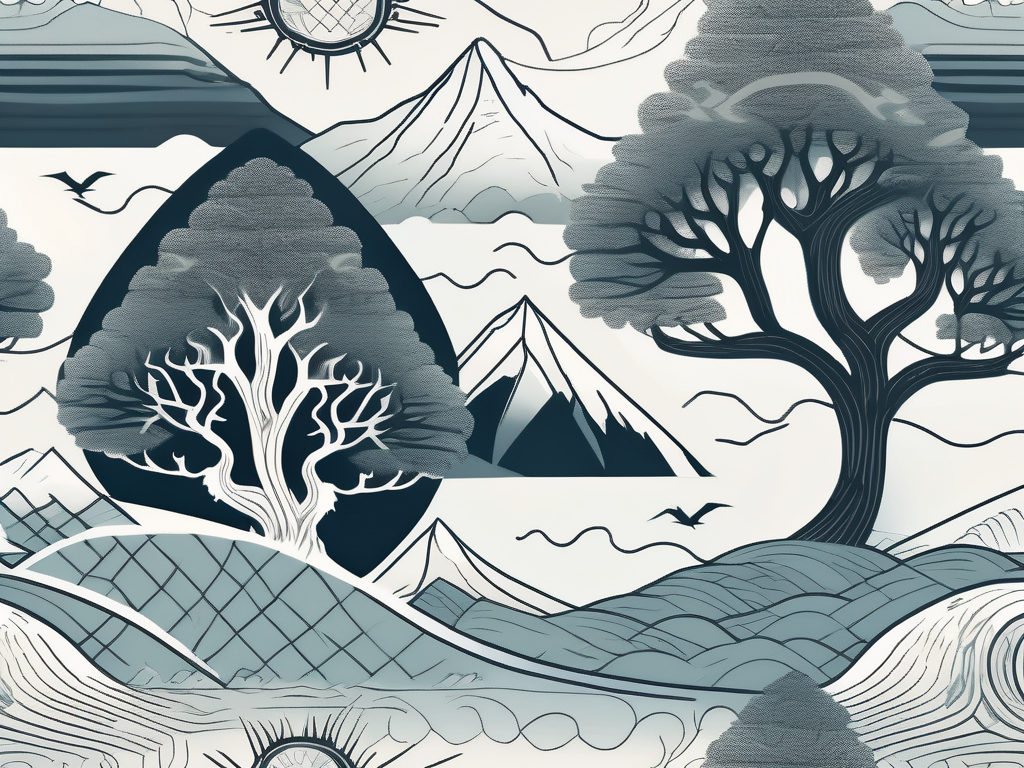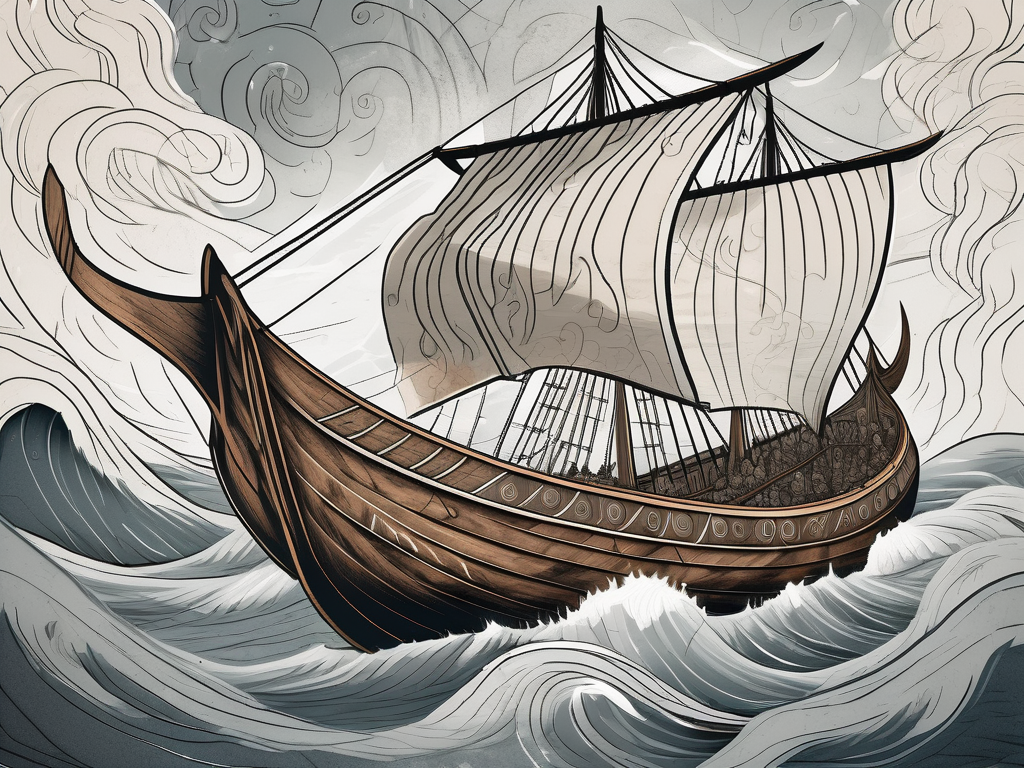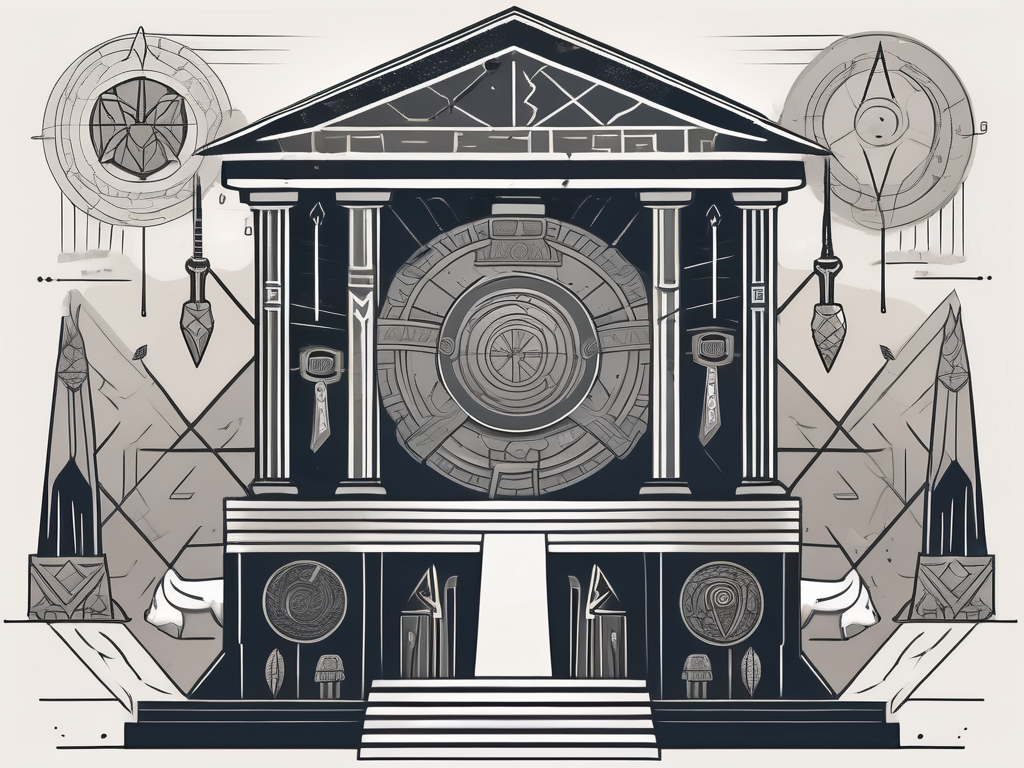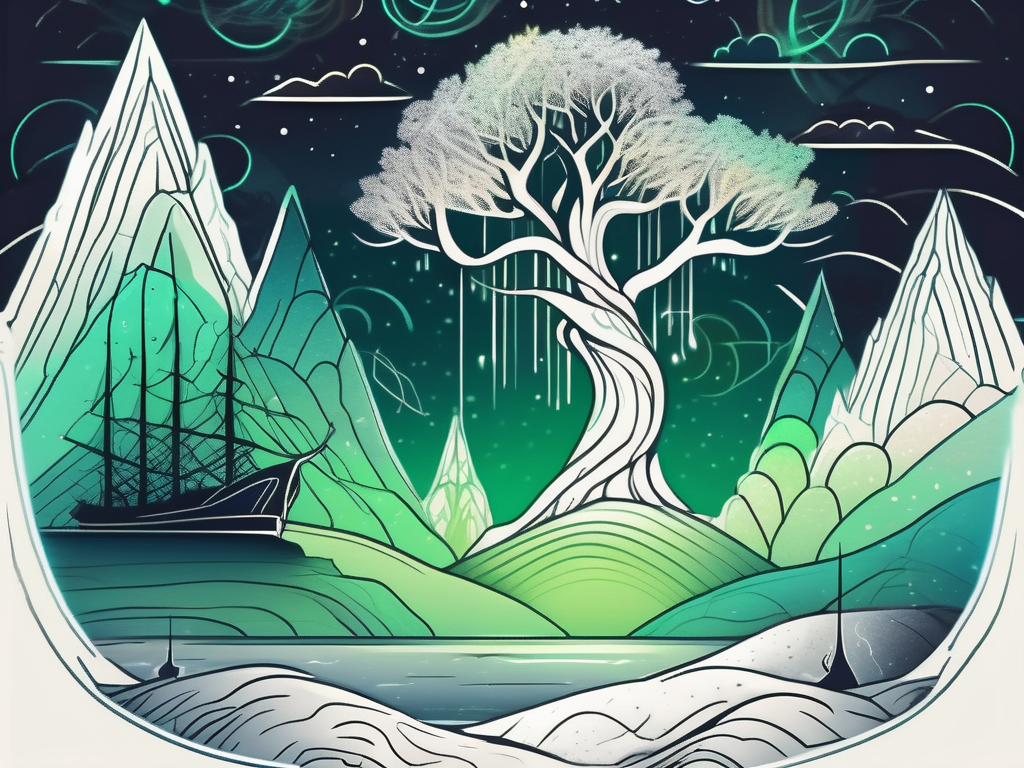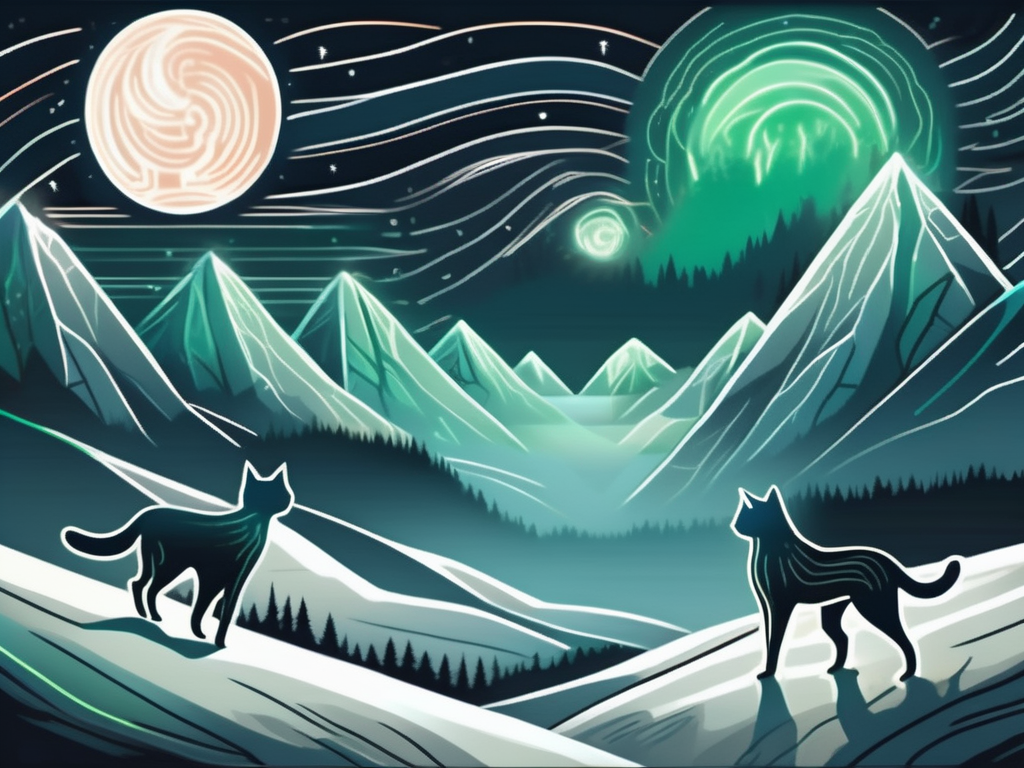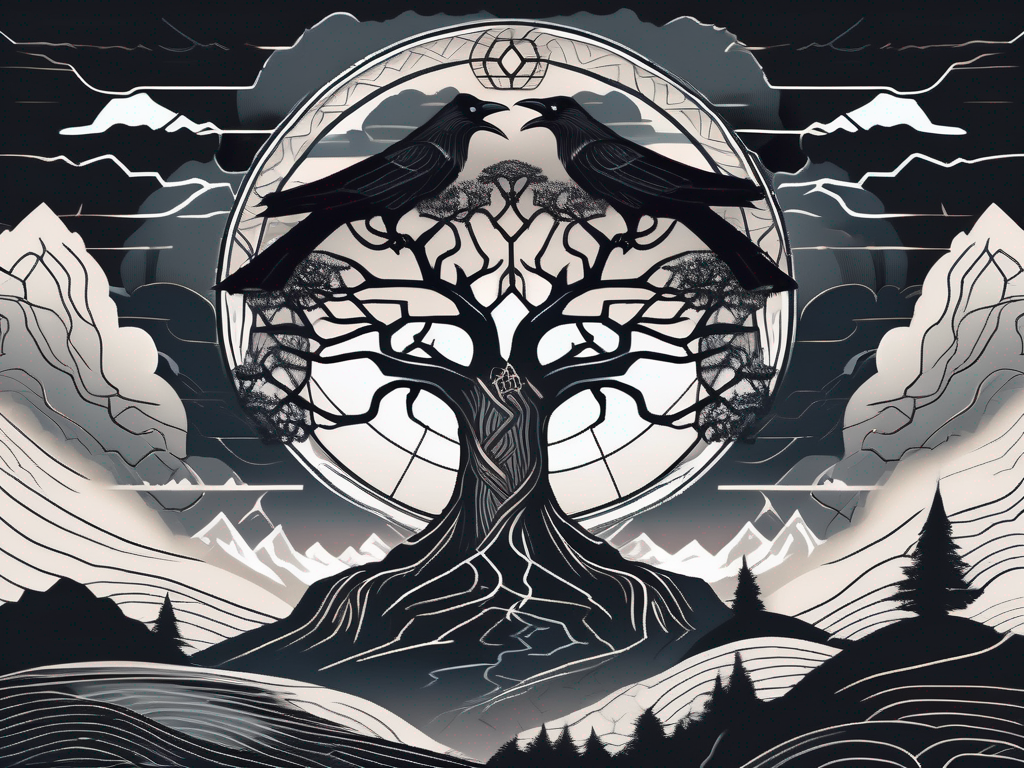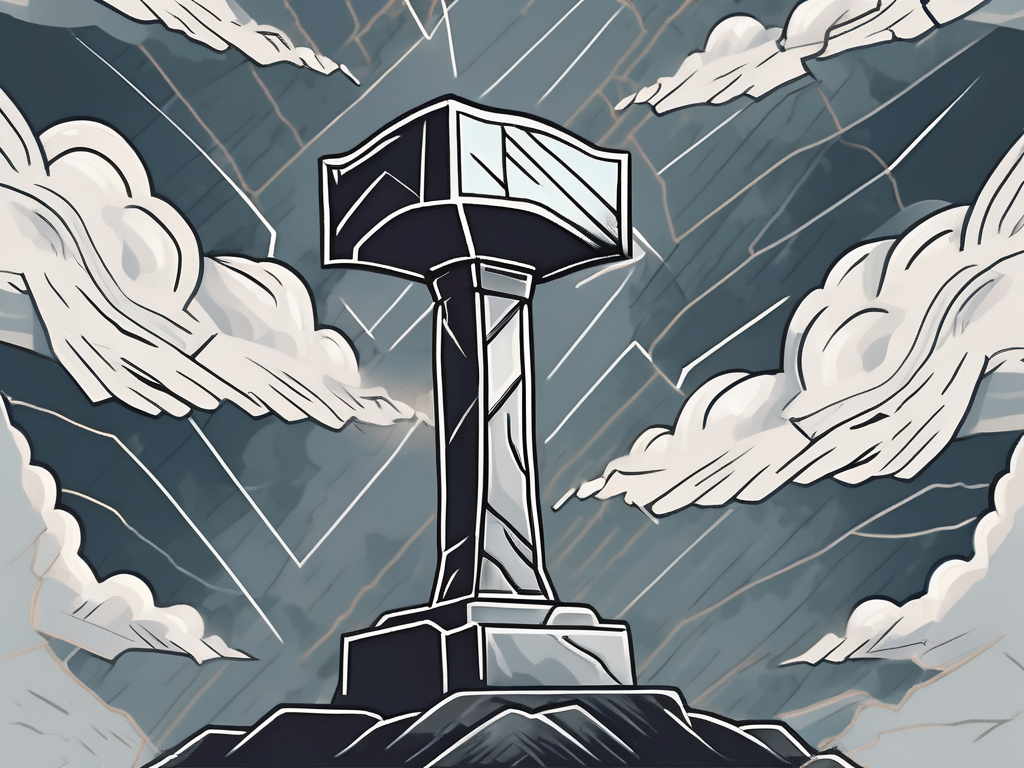The Norse pantheon is a complex web of divine beings, with gods and goddesses intertwined in a majestic family tree. To truly understand the mythology of the Norse gods, it is essential to explore their divine lineage and the relationships that bind them together. In this article, we will delve into the depths of this ancient family tree and unravel the fascinating tales of the Norse gods.
Understanding the Norse Pantheon
Before we embark on our journey through the divine lineage, let’s take a moment to familiarize ourselves with the Norse pantheon. The pantheon consists of two main clans: the Aesir and the Vanir. These divine beings are the central figures in Norse mythology and play vital roles in the creation of the cosmos and the development of the Nine Worlds.
The Norse pantheon is a rich tapestry of gods and goddesses, each with their own unique attributes and responsibilities. From the mighty Aesir to the enigmatic Vanir, these deities shape the world in which they reside, influencing the lives of mortals and immortals alike.
The Aesir: The Main Gods of Norse Mythology
The Aesir are the principal gods in the Norse pantheon. These powerful beings reside in Asgard, the realm of the gods, and govern various domains such as war, wisdom, and fertility. At the forefront of the Aesir pantheon stands Odin, the All-Father and ruler of Asgard. Known for his wisdom and knowledge, Odin is often depicted as a wise old man with a long beard and a single eye, sacrificed in exchange for wisdom.
Accompanying Odin are prominent deities like Thor, the god of thunder and protector of mankind. With his mighty hammer Mjolnir, Thor defends Asgard and Midgard, the realm of humans, from the forces of chaos and destruction. His strength and bravery are legendary, making him a beloved figure in Norse mythology.
Another notable Aesir deity is Freyja, the goddess of love and beauty. Known for her enchanting allure, Freyja is associated with fertility, desire, and magic. She is often depicted wearing a cloak of falcon feathers and driving a chariot pulled by two large cats. Freyja’s influence extends beyond matters of the heart, as she is also a skilled practitioner of seiðr, a form of Norse magic.
The Vanir: The Other Divine Clan
The Vanir are another group of divine beings who form an essential part of the Norse pantheon. Originally hailing from Vanaheim, the Vanir gods are associated with fertility, nature, and prosperity. Njord, the god of the sea and wealth, is one of the prominent members of this clan. As the ruler of the oceans, Njord ensures bountiful catches for fishermen and grants prosperity to those who honor him.
Another significant Vanir deity is Freyr, the lord of harvest and abundance. With his magical ship Skíðblaðnir and his golden boar Gullinbursti, Freyr ensures a plentiful harvest and fertility of the land. He is often depicted as a handsome and radiant figure, symbolizing the prosperity and abundance that he brings to the world.
Although the Vanir and the Aesir had a tumultuous relationship in the past, marked by conflicts and rivalries, they eventually united to form a cohesive divine family. This union symbolizes the harmony and balance between different aspects of existence, highlighting the interconnectedness of the Norse cosmos.
The Creation of the Cosmos and the Gods
Like many ancient mythologies, the Norse believed that the cosmos and the gods emerged from a primordial void. The creation of the world began with the birth of the first gods and the formation of the Nine Worlds, each with its unique characteristics and inhabitants.
The Norse creation myth is a fascinating tale that delves into the origins of the universe and the divine beings that inhabit it. According to this myth, before the existence of the cosmos, there was only Ginnungagap, an abyss devoid of light and life. It was within this vast emptiness that the forces of fire and ice, Muspelheim and Niflheim, came into being.
Muspelheim, a realm of scorching heat and flames, contrasted starkly with Niflheim, a realm of icy coldness and darkness. These two opposing forces eventually collided, giving rise to Ymir, the first giant. Ymir’s emergence marked the beginning of creation, as well as the birth of the gods.
The Birth of the First Gods
Ymir, the primordial giant, slumbered within the void, and from his body, a race of giants was born. But it was not only giants that sprang forth from Ymir’s flesh; Odin, Vili, and Ve, the first gods, also emerged. These powerful deities would come to shape the destiny of the cosmos and its inhabitants.
Odin, the Allfather and ruler of the gods, possessed great wisdom and knowledge. Vili and Ve, his brothers, complemented Odin’s abilities, each contributing their unique strengths to the divine triad. Together, they formed the foundation of the Norse pantheon.
The Formation of the Nine Worlds
With the birth of the gods, the cosmos expanded as Odin and his brothers embarked on a monumental task. They slew Ymir, the giant from whose body all life had sprung, and used his remains to create the world as we know it.
Ymir’s flesh became the land, stretching across the vast expanse of the newly formed cosmos. His blood flowed to form the mighty oceans, teeming with life and mystery. And his skull, transformed into a colossal dome, became the sky that arched above the Nine Worlds.
But the creation of the cosmos was not complete with the formation of land, sea, and sky. The gods, in their infinite wisdom and power, fashioned the Nine Worlds within this newly established framework. Each realm had its distinct characteristics, inhabitants, and purpose.
Asgard, the realm of the Aesir, the principal gods, stood at the pinnacle of the cosmos. It was a place of grandeur and majesty, home to Odin and his divine brethren. Midgard, the world of humans, occupied a central position, nestled between the realms of gods and giants.
Jotunheim, the realm of the giants, stretched far and wide, harboring beings of immense strength and power. The Nine Worlds also included realms such as Vanaheim, home to the Vanir gods, and Alfheim, the realm of the light elves.
Each of these Nine Worlds had its own unique landscapes, inhabitants, and stories waiting to be told. They formed a complex tapestry of interconnected realms, where gods, giants, humans, and other mythical beings coexisted, shaping the destiny of the cosmos and influencing the lives of mortals.
The Divine Lineage of the Aesir
Now that we have explored the creation of the cosmos, let’s delve into the genealogy of the Aesir gods. Odin, the father of all the gods, had a vast lineage, with his progeny inheriting his power and influence in the pantheon.
Odin’s Progeny: The Most Powerful Norse Gods
Odin’s most famous offspring is Thor, the god of thunder and one of the most revered figures in Norse mythology. Other notable gods in Odin’s lineage include Baldur, the shining god of light, and Tyr, the god of war and justice. These gods played significant roles in shaping the fate of the cosmos and interacting with other realms.
Lesser-Known Offspring of the Aesir
Beyond the well-known gods, Odin also sired numerous lesser-known deities who embodied specific aspects of nature, war, or wisdom. These gods and goddesses may have had less influence on the grand narrative of Norse mythology, but they still contributed greatly to the intricate tapestry of the divine family tree.
The Vanir Family Tree
Now let’s turn our attention to the Vanir clan and their divine lineage. The Vanir gods are deeply connected to fertility and the bounties of nature, as well as the consequences of their tumultuous relationship with the Aesir.
The Fertility Gods and Their Descendants
At the heart of the Vanir pantheon are powerful fertility gods like Freyr and Freyja. Freyr, the god of harvest and abundance, was a beloved deity who ensured the prosperity of the land. Freyja, on the other hand, was a goddess associated with love, beauty, and fertility. These gods blessed their followers with bountiful crops and the joys of love.
The Vanir-Aesir War and Its Consequences
Despite their shared divine ancestry, the Vanir and the Aesir were not always at peace. A conflict, known as the Vanir-Aesir war, erupted between the two clans. After years of battle, the gods eventually brokered a truce and exchanged members of their divine families. This union not only brought an end to the war but also fortified the divine lineage of both clans.
The Role of Giants in the Norse Divine Family Tree
Just as the giants played a significant role in the creation of the cosmos, they also left their mark on the Norse divine family tree. Giants, known as Jotunn, are a race of powerful, often malevolent beings who stood as rivals and, in some cases, ancestors to the gods.
The Jotunn: Enemies or Ancestors?
The relationship between the gods and the giants was complex and multifaceted. While some giants stood as adversaries to the Aesir and Vanir, others formed unlikely alliances and even intermarried with the divine beings. This intricate web of relationships resulted in the birth of hybrid gods, fusing the power and traits of both giants and gods.
Famous Giant-God Relationships and Their Offspring
One of the most famous giants in Norse mythology is Loki. Known for his trickery and shapeshifting abilities, Loki was both friend and foe to the gods. His union with the giantess Angrboda produced monstrous offspring like the wolf Fenrir and the serpent Jormungandr. These powerful beings played pivotal roles in the final events of Ragnarok, the Norse apocalypse.
As we conclude our exploration of the comprehensive Norse gods family tree, we are left in awe of the intricate connections that shape the divine lineage. The Norse pantheon is not merely a collection of individual gods and goddesses but a closely-knit family bound together by blood and destiny. Through their divine ancestry, these gods and giants have enriched the captivating tapestry of Norse mythology, leaving an indelible mark on the ancient world and beyond.
